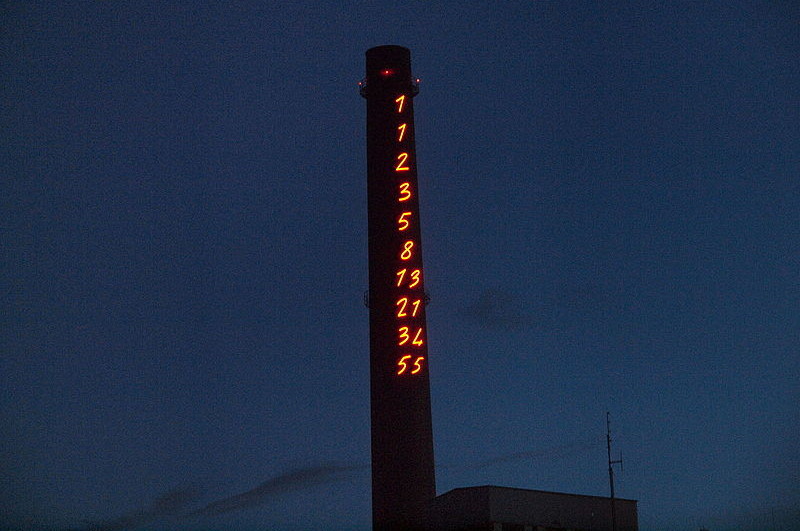
The smokestack of the local power plant in Turku, Finland, bears the first ten numbers of the Fibonacci sequence in glowing letters seven feet high.
The artist, Mario Merz, had been obsessed with the sequence for nearly 30 years when he added the numbers in 1995; he’d already added them to a chapel in Paris and a spire in Turin.
“It is entirely by accident that the sequence reflects two of the major research fields of the University of Turku, namely, number theory and mathematical biology,” write mathematicians Mats Gyllenberg and Karl Sigmund. “As is well known, Fibonacci introduced the sequence at around AD 1200 to model the growth of a rabbit population.”
(Mats Gyllenberg and Karl Sigmund, “The Fibonacci Chimney,” Mathematical Intelligencer 22:4 [2000], 46.)
